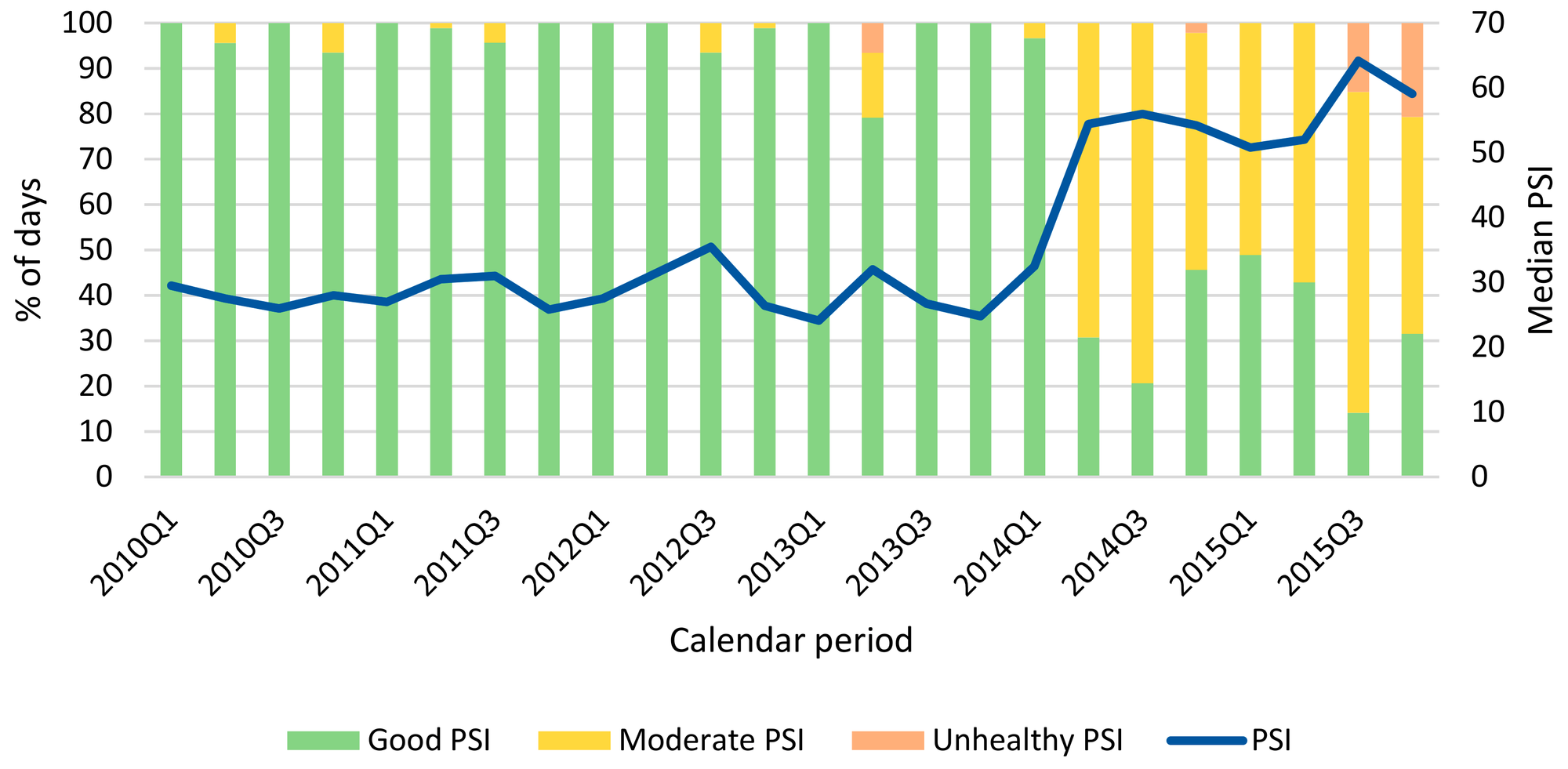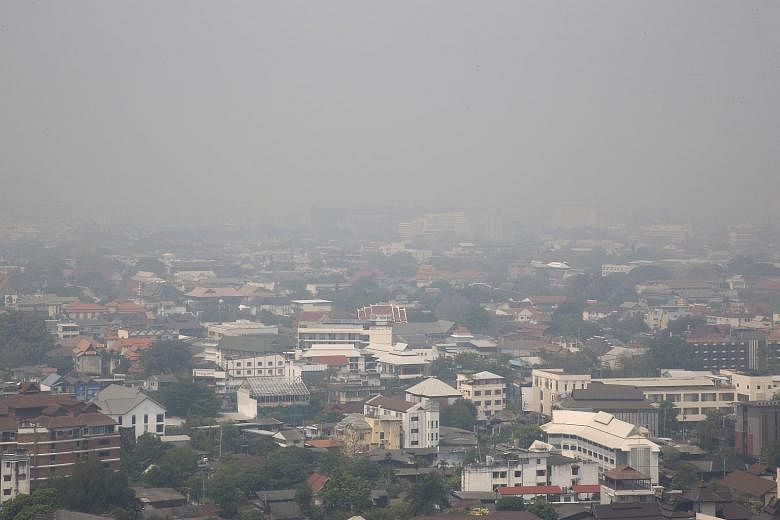
Abstract
Ambient air pollution is a risk factor for both acute and chronic diseases and poses serious health threats to the world population. We aim to study the relationship between air pollution and all-cause mortality in the context of a city-state exposed to the Southeast Asian haze problem. The primary exposure was ambient air pollution, as measured by the Pollutants Standards Index (PSI). The outcome of interest was all-cause mortality from 2010–2015. A time-stratified case-crossover design was performed. A conditional Poisson regression model, including environmental variables such as PSI, temperature, wind speed, and rainfall, was fitted to the daily count of deaths to estimate the incidence rate ratio (IRR) of mortality per unit increase in PSI, accounting for overdispersion and autocorrelation. To account for intermediate exposure effects (maximum lag of 10 days), a distributed lag non-linear model was used. There were 105,504 deaths during the study period. Increment in PSI was significantly associated with an increased risk of mortality. The adjusted IRR of mortality per the 10-unit increase in PSI was 1.01 (95%CI = 1.00–1.01). The lag effect was stronger when PSI was in the unhealthy range compared to the good and moderate ranges. At lag = 7 days, PSI appeared to have an adverse effect on mortality, although the effect was not significant. These findings provide evidence on the general health hazard of exposure to air pollution and can potentially guide public health policies in the region.
5. Conclusions
In this study, we have demonstrated an association between exposure to elevated PSI levels and an increased short-term risk of mortality in Singapore. Air pollution is a tremendous public health issue, and our study has incorporated the Singapore context into the existing and growing body of evidence on the effect of air pollution on health [12225253545556].
Also read

